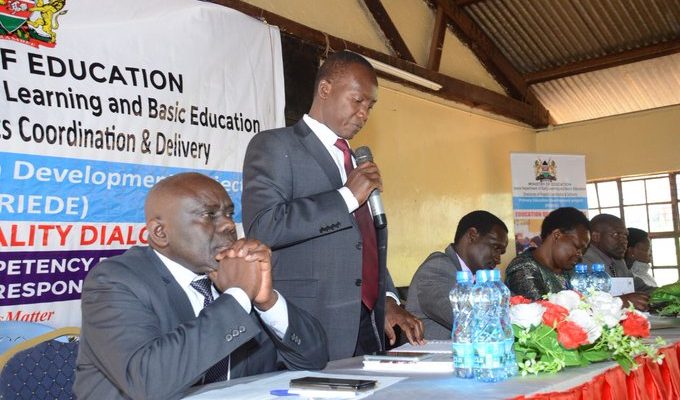By Njamiu Kiboi
Remember when you were young and all you wanted to be was a doctor, or a pilot, surgeon or even an engineer but as time went by and you grew older you switched from your initial career for some reasons.
Now the government is putting up measures through a competency-based curriculum in the country, which is not about passing exams, but rather help pupils realize their talents as well as their skills. We visited Reby Peter Memorial School in Kahawa West to paint out a picture of how the news education system is carried out
Ever thought of what the early childhood education entails? How it’s being rolled out by educators trusted with this task? How children are responding to this new curriculum. Well, our visit to Reby Peter Memorial Campus brings a clear picture of what happens behind the most talked-about new curriculum.
The activities carried out is a clear indication that early childhood education plays an important role in laying the foundation for children to succeed in the future.
Evidently portraying that the ministry of education is poised for continued growth in the years to come, the new curriculum focuses on both the ability of the learners in class as well as in the co-curriculum activities, unlike the earlier curriculum which focused on students passing exams.
Self-efficacy, communication and collaboration, critical thinking and problem-solving are among the seven core competencies that the pupils undergo under five years and below undergo in their daily lessons at school all this in a bid to bring out the competency in them and teach them on life skills.
The teacher may ask the pupils to name certain colours or the activities they are engaging themselves in so as to gauge if they understand.
The proposed 2-6-6-3 system will entirely replace the 8-4-4 system that was introduced by retired President Moi in 1985.according to the government; the new system will adopt three levels: early year’s education, middle-level education, and tertiary and university level.
The 2-6-6-3 education system splits the primary education curriculum into two categories, 6 years and three years respectively. The primary goal of the new 2-6-6-3 education system is to fill in the gap of making students ready for the employment world which the 8-4-4 system has so far failed to achieve.
It’s at this stage that the system fundamentally differs with the 8-4-4 curriculum. Learners are given the opportunity to explore their own abilities personalities and interests which will then form a basis of choosing subjects according to careers paths at the senior school.
The early childhood education ECD is placed to put the children’s needs before those of their teachers.
A teacher is expected to keep records of their students, know their strengths as well as their weakness, to enable them to gauge where their ability and competency lies so as they can help bring the talent out of them.
Like any other new system, there are challenges too for this. The imminent change education plan has been deemed time-consuming by critics that requires a lot of money to keep up with, unlike the old.
The Kenya National Union of Teachers (KNUT) Secretary-General Wilson Sossion has denounced it by claiming, the ministry should address issues such as lack of enough teachers, poorly developed infrastructure and the training of teachers.
In the advent of the news 2-6-6-3 education plan, education experts felt the current 8-4-4 system was unfit for learning in the 21st century, where learning institution has been blamed of producing half-baked graduates with courses not marketable in the current job market.

